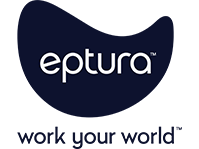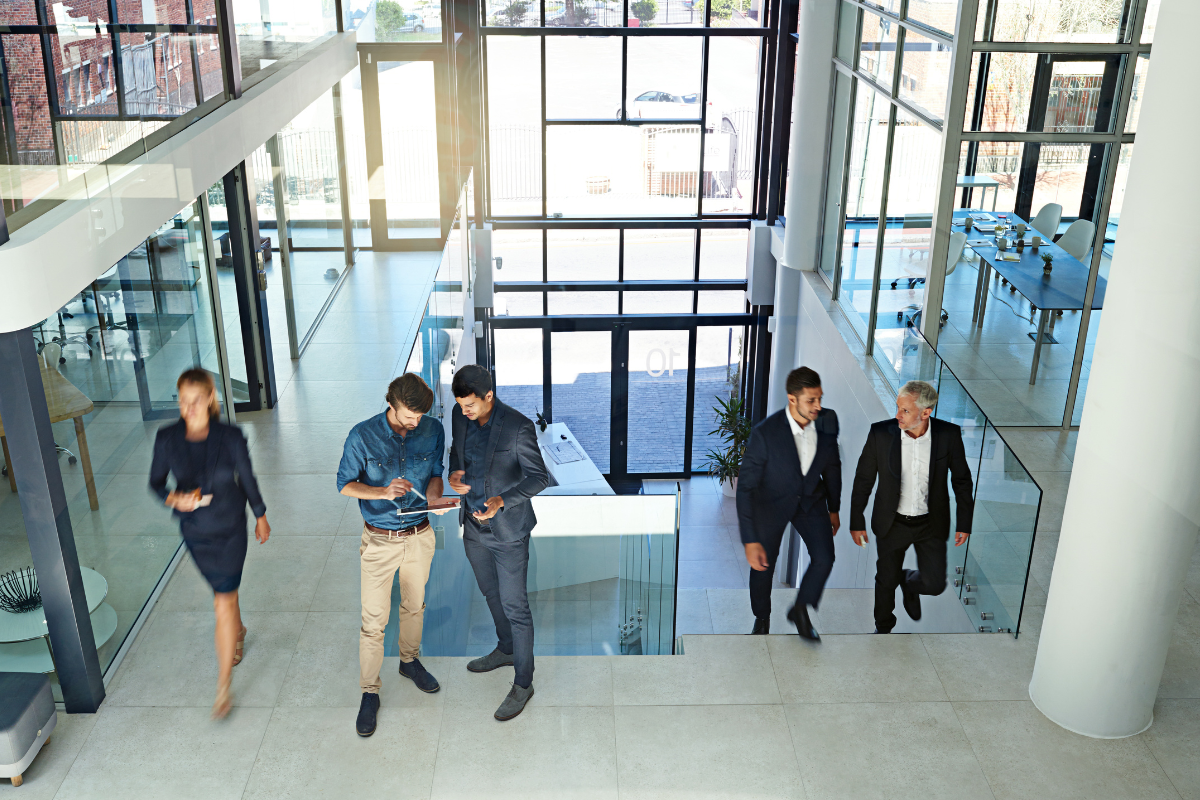
There’s a growing number of people coming to the office, and many of them are customers and clients. In fact, over the past three years, visitors per location have nearly doubled across all regions, according to the 2025 Workplace Index report. The increases are putting further pressure on facility and workplace leaders to improve the visitor experience.
By implementing intelligent worktech, organizations can create welcoming, safe spaces that impress visitors and protect their brand reputation.
What are the benefits of successful on-site customer and client visits?
Every visit is an important opportunity to strengthen business relationships. By ensuring that each visit is positive and professional, you build trust and confidence, enhance your brand’s reputation, and boost customer satisfaction and loyalty, all of which are vital for long-term success and growth.
Building trust and confidence
Every visit, whether it’s the first or the tenth, is an opportunity to reinforce a positive image. A welcoming and well-organized environment demonstrates that you are professional and reliable. When customers feel valued and respected, it builds a foundation of trust, which is essential for long-term business relationships. This trust can lead to more open communication, greater collaboration, and stronger partnerships.
Enhancing brand reputation
The physical space of your office is an extension of your company’s identity and values. A clean, modern, and well-maintained office reflects a brand that is committed to excellence and attention to detail. Conversely, a disorganized or unprofessional environment can undermine your brand’s reputation, making customers question the quality of your services or products. By consistently presenting a high-standard environment, you reinforce your brand’s image and differentiate yourself from competitors, which can be a significant advantage in a crowded market.
How does modern visitor management improve the customer and client experience?
For customers and clients, visitor management can enhance their experience by making the check-in process faster, more secure, and more welcoming. For example, when a client arrives at a corporate office, they can use a self-service kiosk to sign in, which not only reduces wait times but also provides a more professional and modern first impression. The system can also send notifications to the host, ensuring that they are aware of the visitor’s arrival and can greet them promptly.
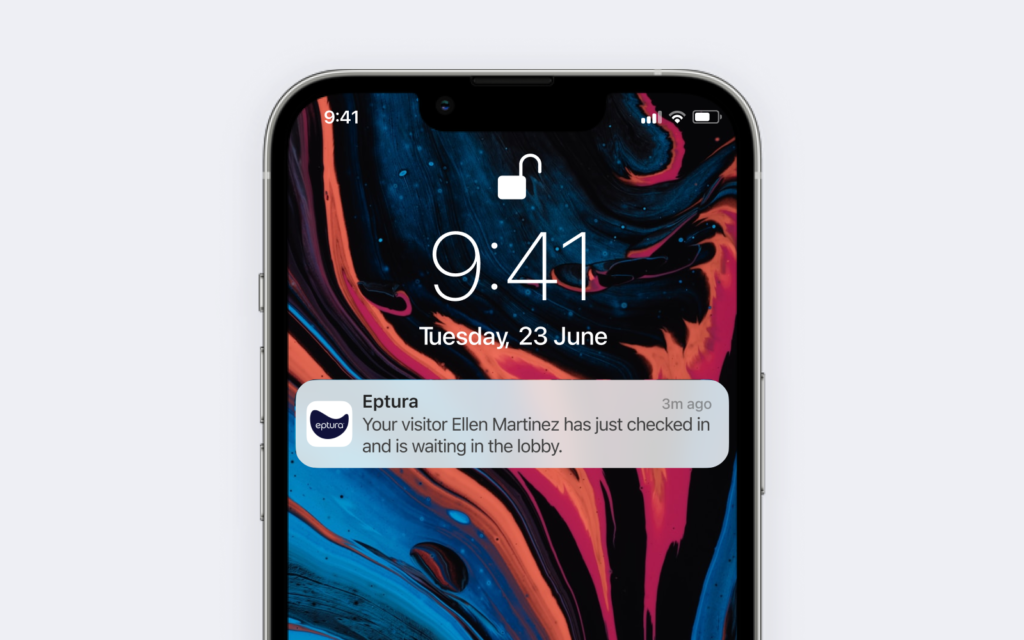
Remote registration and touchless check-ins
By allowing visitors to register and check-in using their smartphones, these features eliminate the need for physical interaction in crowded lobbies, which can often be a source of delay and frustration. Visitors appreciate the convenience of being able to complete the registration process before they arrive, ensuring a smooth and quick entry. A touchless check-in process also adds a layer of modernity and technological sophistication, which can make visitors feel that they are dealing with a forward-thinking and innovative organization.
Legal document signing
By asking visitors to sign customized documents such as non-disclosure agreements, safety guidelines, or privacy notices at check-in or during the pre-registration process, you ensure that all necessary legal and safety protocols are followed without delays or inconvenience. Visitors are more likely to feel respected and valued when they see that the company has taken the time to ensure all necessary protocols are in place. Digital document signing ensures that all records are accurate and up to date, which can be invaluable for audits and legal purposes. A visitor who has a smooth check-in experience is more likely to have a positive view of the organization, which can lead to increased customer satisfaction and a stronger likelihood of repeat business and referrals. The overall impression of a well-organized and legally compliant facility can build trust and confidence, making the visit more enjoyable and productive for everyone involved.
Use case: Visitor management at a government facility
A business consultant arrives at a federal government agency office to submit important documents. As they approach the building, they notice an entrance with a modern kiosk. The consultant follows the on-screen instructions to sign in, and when prompted, scans the QR code they received as part of the pre-approval process. The software sends a notification to the receptionist, who greets the consultant promptly and escorts them to the security checkpoint. The security team uses the visitor management system to verify their identity and ensure they have the proper clearance. Once cleared, the consultant is directed to the appropriate department, where they are met by a staff member who helps them with their documents.
The entire process is smooth, secure, and efficient, making the consultant feel respected and valued. This positive experience not only saves them time but also builds trust in the agency’s professionalism and security measures.
How does wayfinding support the visitor experience?
Wayfinding involves the strategic placement of signs, maps, and other navigational aids, while digital signage includes interactive displays and digital maps that can provide real-time information. For employees and visitors, these features can transform a potentially frustrating and time-consuming experience into a seamless and enjoyable one. Imagine a large corporate office where new hires and visitors often struggle to find their way to different departments. With digital signage, they can use touchscreens to get directions, see real-time updates on meeting room availability, and even locate parking spots. This not only saves time but also reduces stress, making the overall visit more pleasant.
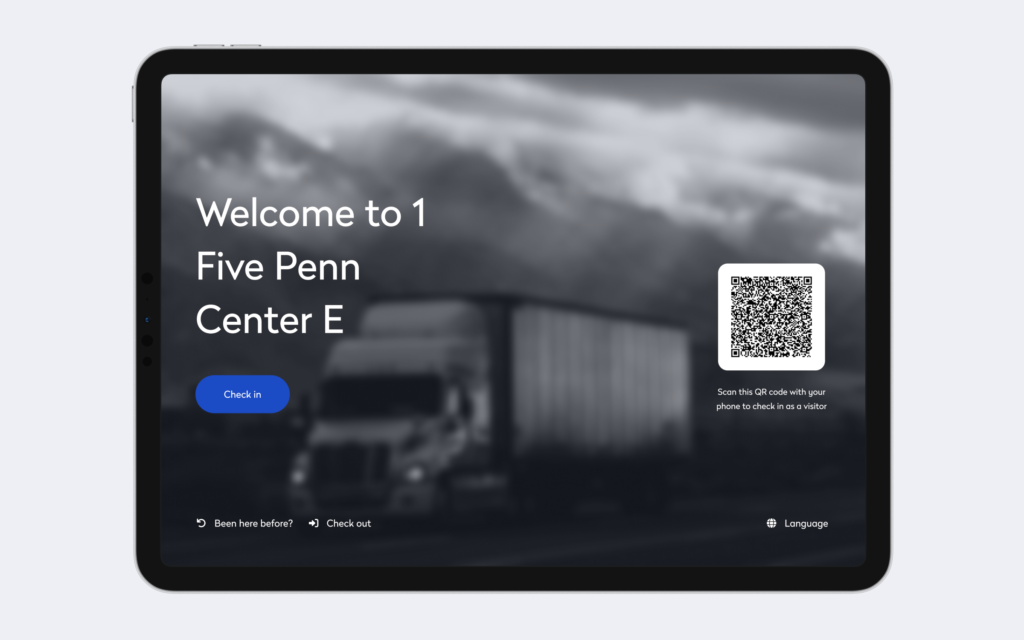
By providing clear and interactive guidance, wayfinding and digital signage ensure that visitors can focus on their primary purpose for visiting, whether it’s attending a meeting or touring the facility, without the frustration of getting lost.
Use case: Wayfinding at a healthcare facility
A family member arrives at a large hospital to visit a patient who has just undergone surgery. As they enter the main lobby, they see an interactive digital sign that greets them and offers to help them find their way. They tap the screen and select the “Orthopedic Department” from the list. The sign displays a clear map with a highlighted route and even shows the current wait times for the department. The family member follows directions and finds the department without any trouble. Inside, digital signs provide updates on the patient’s doctor’s availability and the schedule for the day. The ease of navigation and the real-time information make the visit less stressful and more efficient. They can focus on visiting the patient instead of worrying about getting lost or waiting in long lines.
The future of facility management is welcoming
With the increasing number of visitors coming to facilities, it’s more important than ever to improve their experience to protect and enhance your brand reputation. Modern facility solutions like intelligent visitor management and digital wayfinding not only streamline operations and enhance security but also build trust and satisfaction among employees and visitors. By investing in these innovations, organizations can create a more welcoming, efficient, and professional environment, setting themselves apart in a competitive market and ensuring long-term success.
